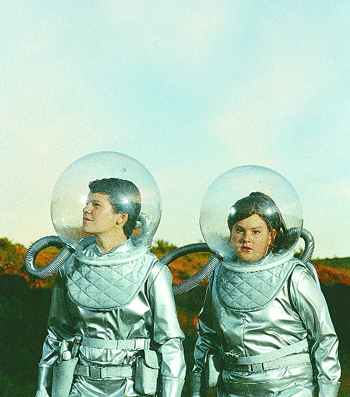Gay teen love story has universal appeal
Gay filmmaker Stewart Main’s adaptation of Graeme Aitken’s novel “50 Ways of Saying Fabulous” is a fantastic and tender coming-of-age film.
Billy (Andrew Patterson), an overweight 12-year-old boy whose best friend is his cousin Louise, known as Lou, a tomboy (Harriet Beattie). Their friendship is tested with the arrival of two outsiders, Roy (Jay Collins), a strange new kid Billy’s age, and Jamie (Michael Dorman), a hunky older teen who comes to help out on Billy’s family farm. Both young men stir up Billy’s desires, and, as a result, cause quite a bit of trouble.
Main, chose to make the film because, he explained, because “my producer gave it to me to read and said this would make a fabulous film.” He continued, “It is not my story, not in its specifics, anyway. I suppose it was my story—in that I was a gay adolescent, so I had the same sort of travails in terms of being an outsider—but really it was the humor of the book I could identify with. It tells a very truthful story.”
In fact, Main likens himself to the character of Roy, the awkward new boy who tries to befriend Billy, and teaches him about the pleasure of sex.
“Whereas Billy is a much more naïve character at the beginning of the film, I came out to myself at 11, I think,” the filmmaker recalled. “And I came out to all my friends and peers at school when I was 13.”
Main explains that growing up confident and defiant about his sexuality during the Stonewall era, he felt like “a bit of a rebel,” but his agenda about portraying sexuality in this film is not especially radical.
“One of the things that attracted me to the book is that I thought it offered the opportunity to present what is ostensibly a gay coming of age story in quite a mainstream manner,” Main said. “I thought there was an opportunity to break out of the niche audience you generally find with gay films with this story because it is so innocent.”
Significantly, “50 Ways” is careful not to present the pre-teen sexuality sensationally or treat the characters exploitatively. And Main defended the decision not to be prurient.
“I think we went as far as was necessary, and we never wanted to go anywhere that was beyond what we felt was legally or morally right,” he said. “There was no point in taking the actors further than they are up to in their own lives. I think that is morally questionable anyway. And I wanted to retain the awakening quality of adolescence. I don’t think any sensible gay or straight audience would think we should go any further than we did.”
Audiences will likely find themselves caring for and relating to the characters—from girls who are better at sports and boys who like to dress up, to the outsider navigating his budding sexuality. “50 Ways” celebrates these sensitive qualities, especially in a series of comic sequences set in outer space in which Billy becomes “Lana,” a girl with a ponytail, and Lou is the masculine hero who rescues her.
“That fantasy world was the safety valve that Billy and Lou had set up for themselves where they could explore their gender differences, and swap gender roles,” Main noted, indicating that audiences may not realize the young actors switched genders until the second or third time “Lana” and Lou are on screen.
However, despite these flights of fancy, “50 Ways” is a very realistic tale, filmed within 50 miles of where Aitken grew up and wrote the book.
“For me, the environment reflects something about people’s childhoods,” said Main. “[It] has a very gorgeous, lush, golden quality about it, but at the same time, it has a harshness, a rocky, gritty, underbelly. I think we like to think of childhood as a dreamy, easy, safe time, but in fact, for a lot of people, it is really a rough transition.”
And the film captures this evolution beautifully on screen. While Lou sulks because her mother wants her to get a bra, and Billy fights with his father, Main shows the characters aching for their own identities, independent of adult opinions and influence. In fact, the filmmaker deliberately keeps adults off screen for much of the drama to emphasize this point of view.
Billy’s scheming to spend time alone with Jamie will strike a chord with anyone who ever had a crush on a sexy, older, and generally unavailable straight teen; Lou’s battle to stay out of a dress will certainly ring true for former tomboys. And of course, viewer’s who share Main’s identification with the outsider will certainly find a commonality with the character of Roy.
Ultimately, what makes “50 Ways” fabulous is that it tells a remarkably affecting and universal story that will appeal to everyone.
gaycitynews.com



































